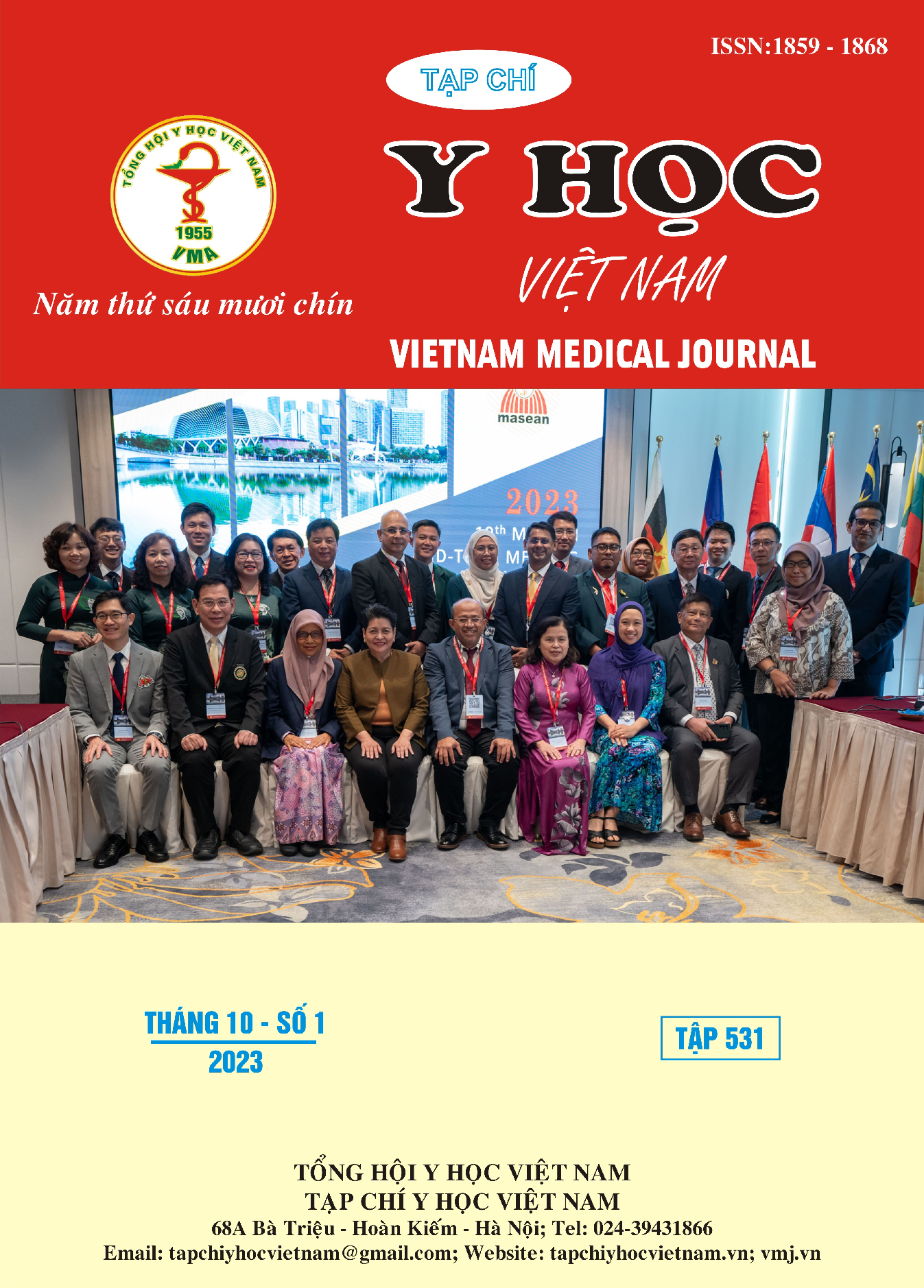CLINICAL AND PARACLINICAL CHARACTERISTICS IN PATTERNS WITH GRADE III GLIOMA
Main Article Content
Abstract
Objectives: To describe the clinical and subclinical characteristics of patients with grade III glioma at K Central Hospital. Subjects and methods: Cross-sectional tissue study on 18 patients with grade III glioma undergoing surgery, performing subclinical tests at K Central Hospital, Tan Trieu campus, from January 2019 to December 2020. Results: the mean age of patients was 42.1 ± 11.4 years old. The proportion of men is higher than that of women (55.6%). The main symptoms of patients are headache (88.9%), nausea and vomiting (22.2%), dizziness (22.2%), and hemiplegia (16.7%). On admission, 61.1% of cases had Karnofsky scores>80 points. The rate of IDH gene mutation in the studied patients was 66.7%. Conclusion: Glioblastoma grade III is usually over 40 years old; the main symptoms are headache, nausea, and vomiting. Patients on admission are generally in good condition. IDH gene mutations often occur in grade III gliomas at a high rate.
Article Details
Keywords
grade III glioma, anaplastic astrocytoma anaplastic oligodendroglioma.
References
2. Esperanza GM Roberto GN, Alfonso MB, Julio Sd (2011), Biological Markers of Recurrence and Survival of High-Grade Gliomas: The Role of Hepatocyte Growth Factor, Glioma in Exploring Its Biology and Practical Relevance, Dr. Anirban Ghosh, Editor InTech, 37-48.
3. Trần Kim Tuyến (2022), Nghiên cứu đột biến gen IDH1/2 của u tế bào thần kinh đệm lan tỏa ở người trưởng thành, Luận án tiến sĩ y học, Đại học Y Dược thành phố Hồ Chí Minh.
4. Hoàng Minh Đỗ (2009), Nghiên cứu chẩn đoán và thái độ điều trị u não thể glioma ở bán cầu đại não, Luận án tiến sĩ Y học, Học viện Quân Y.
5. I. Shibahara, Y. Sonoda, T. Shoji, et al. (2015). Malignant clinical features of anaplastic gliomas without IDH mutation. Neuro-oncology, 17(1): 136-144.
6. B. K. Rasmussen, S. Hansen, R. J. Laursen, et al. (2017). Epidemiology of glioma: Clinical characteristics, symptoms, and predictors of glioma patients grade I–IV in the the Danish Neuro-Oncology Registry. Journal of Neuro-oncology, 135(3): 571-579.
7. R. Stupp, W. P. Mason, M. J. van den Bent, et al. (2005). Radiotherapy plus Concomitant and Adjuvant Temozolomide for Glioblastoma. The New England Journal of Medicine, 352(10): 987-996.
8. Y. Narita, S. Shibui (2015). Trends and outcomes in the treatment of gliomas based on data during 2001–2004 from the Brain Tumor Registry of Japan. Neurologia medico-chirurgica, 55(4): 286-95.
9. C. Hartmann, J. Meyer, J. Balss, et al. (2009). Type and frequency of IDH1 and IDH2 mutations are related to astrocytic and oligodendroglial differentiation and age: a study of 1,010 diffuse gliomas. Acta neuropathologica, 118(4): 469-474.


